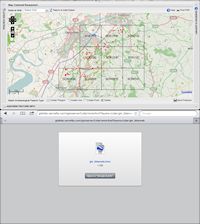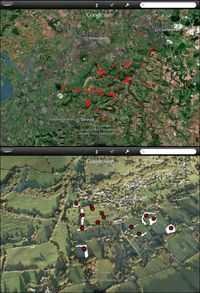

Figure 15:Illustrates the use of application on the Apple iPad and the export of kmz file.
Figure 16: Illustrating the Google Earth kmz overlay used during fieldwork
Fulfilment of Objective 5 required field evaluation or ground truthing and was achieved with appropriate field visits based upon volume of data generated and targets identified, in liaison with Gloucestershire County Council. An iPad tablet running Google Earth software with a vector overlay, in a kmz file format, exported from the WebGIS application, was the primary device used in the field (Figures 15 and 16).


Figure 15:Illustrates the use of application on the Apple iPad and the export of kmz file.
Figure 16: Illustrating the Google Earth kmz overlay used during fieldwork
Printed images generated within the application were also used as a backup data source. The chief focus of the evaluation was to assess positional (spatial) attribute accuracy, important to any geospatial data but particularly important given the variation in training and knowledge of the volunteer user (Arago et al 2011, 2). This was to establish the existence and nature of features rather than ascertain the positional accuracy of transcription beyond approximately ±10m (the average accuracy of the built-in GPS of an iPad). This ensures the site can be subsequently located and further refinement of the site extent could be established during future study as a group fieldwork project if further analysis was warranted and if appropriate, features could be submitted for inclusion in the relevant HER. Users were encouraged to undertake fieldwork on features they have previously identified and this could extend tocollaborative, group fieldwork projects.
Internet Archaeology is an open access journal based in the Department of Archaeology, University of York. Except where otherwise noted, content from this work may be used under the terms of the Creative Commons Attribution 3.0 (CC BY) Unported licence, which permits unrestricted use, distribution, and reproduction in any medium, provided that attribution to the author(s), the title of the work, the Internet Archaeology journal and the relevant URL/DOI are given.
Terms and Conditions | Legal Statements | Privacy Policy | Cookies Policy | Citing Internet Archaeology
Internet Archaeology content is preserved for the long term with the Archaeology Data Service. Help sustain and support open access publication by donating to our Open Access Archaeology Fund.
File last updated: Wed Oct 23 2013